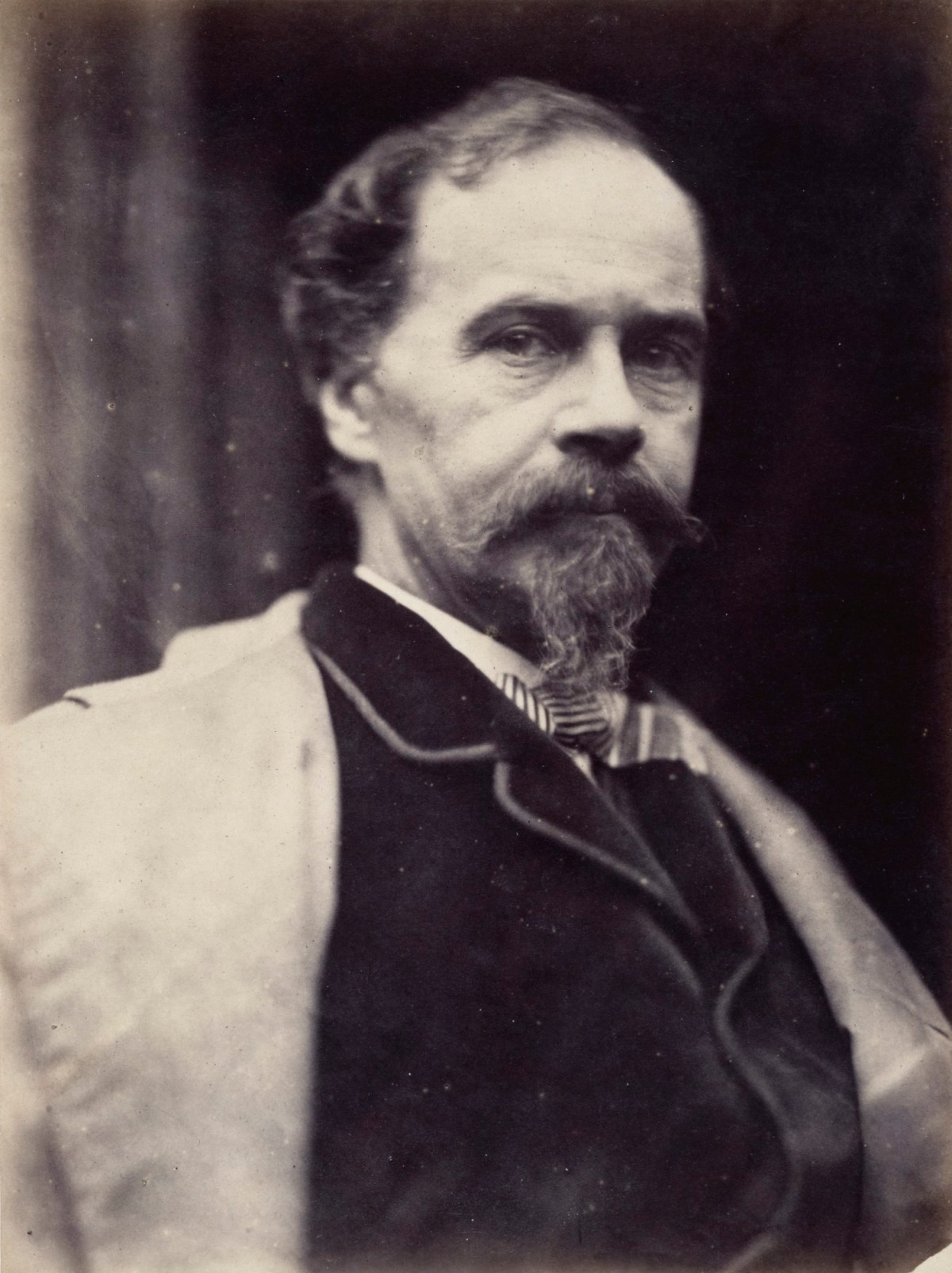
David Wilkie Wynfield, William Wetmore Story (1819-1896), ca.1860s.
Albumen print mounted on card. 217 mm x 162 mm. © Photo: Royal Academy of Arts, London. Photographer: Prudence Cuming Associates Limited.
This image is not available to download. To licence this image for commercial purposes, contact our Picture Library at picturelibrary@royalacademy.org.uk
William Wetmore Story (1819-1896), ca.1860s
David Wilkie Wynfield (1837 - 1887)
RA Collection: Art
David Wilkie Wynfield was the son of an Indian Army officer and a great nephew of Sir David Wilkie RA. After studying at Leigh’s art school in London, he exhibited paintings of historical and literary subjects from 1859. Although he continued to paint throughout his life, Wynfield is now best known for his striking photographic portraits of fellow artists, produced during the 1860s.
Wynfield’s sitters were predominantly artists and architects, many were members of the Royal Academy and included some of the most prominent artists of the day such as Edouard Manet, John Everett Millais PRA and Lord Frederic Leighton PRA. Many figures wore fancy dress mimicking the appearance of Old Masters and other historical figures: Millais as Dante, Sir Edward Burne-Jones Bt ARA as Holbein and T.O. Barlow RA as Rembrandt. The portraits draw allusions between Wynfield’s contemporaries and their illustrious predecessors. However, the portraits of Manet and Holman Hunt suggest he later abandoned the use of costume.
Juliet Hacking analyses these photographs in Princes of Bohemia: Photographs by David Wilkie Wynfield, a catalogue for an exhibition of the same name at the National Portrait Gallery in 2000. She writes that there is a tragic element to the portraits as ‘the technical advances of the nineteenth century which increased at an accelerated rate man’s knowledge of his world also stressed the insignificance of human life and endeavour in the face of the unceasing cycles of evolution and decay. By making reference to a previous age of transition Wynfield’s portrait series highlights the psychological dilemmas engendered both by the condition of the Victoria age and by the artist’s own condition: the transition from youth to maturity, noncomformity to conformity, faith to reason.’
Wynfield eschewed the conventions of mainstream Victorian photography. His innovative portraits made use of painterly and experimental techniques including close-up views, soft focus and strong contrasts of light and shade. He used long exposures so subtle movements from the sitter were picked up by the camera. Areas of light and dark in the background were carefully placed to contrast with the different tones of the figure: white behind dark areas of hair and dress and dark grey or black to contrast with the white profiles.
Julia Margaret Cameron, who became the most acclaimed British photographer of the nineteenth-century cited Wynfield as the most dominant influence on her work saying to ‘his beautiful photography I owed all my attempts & indeed consequently all my success’. Cameron adopted Wynfield’s dramatic use of lighting, poses and at times subjects.
In 1864, a number of the portraits were anonymously published by Messrs. Hering of Regent Street under the title The Studio: A Collection of Photographic Portraits of Living Artists, Taken in the Style of the Old Masters, by An Amateur. Some contemporary critics believed the soft focus to be a sign of amateurism but others lauded the painterly quality of his work. The publication may have been unsuccessful as Wynfield soon withdrew the photographs from circulation.
There are seventy two prints of Wynfield’s photographs in the Academy’s Collection, all of which were presented to the Academy by William Yeames RA, Wynfield’s brother-in-law, when he retired from the post of Librarian in 1911.
Object details
217 mm x 162 mm
Start exploring the RA Collection
- Explore art works, paint-smeared palettes, scribbled letters and more...
- Artists and architects have run the RA for 250 years.
Our Collection is a record of them.



